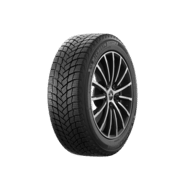
Learn
Your ultimate checklist by province and territory
- When to put on Winter Tires in QUEBEC
- When to put on Winter Tires in BRITISH COLUMBIA
- When to put on Winter Tires in ONTARIO
- When to put on Winter Tires in ALBERTA
- When to put on Winter Tires in MANITOBA
- When to put on Winter Tires in NEW BRUNSWICK
- When to put on Winter Tires in NEWFOUNDLAND AND LABRADOR
- When to put on Winter Tires in NOVA SCOTIA
- When to put on Winter Tires in PRINCE EDWARD ISLAND
- When to put on Winter Tires in SASKATCHEWAN
- When to put on Winter Tires in YUKON TERRITORY
- When to put on Winter Tires in NORTHWEST TERRITORIES AND NUNAVUT
There are several ways to gauge when your Winter Tires should be mounted to your car, from checking the low temperatures to government regulations, and the age-old trick of eyeballing the recent weather. Nevertheless, depending on which Canadian province you’re located in, the rule of thumb remains the same: you should be driving with winter tires during the winter months.
Earlier, we touched on the magic rule of seven (7) degrees Celsius, but let’s go even further. Here’s our no-frills info hub to winter tire regulations and the right time to fix your Winter Tires on, in all provinces and territories in Canada.
Using summer tires in winter is not recommended, as these tires are not designed to withstand cold temperatures. Without the deeper tread and additional grooves of winter tires, summer tires can struggle to grip the roads in icy or snowy weather. Their low rolling resistance leads to longer braking distances, while their tread compound naturally stiffens in freezing temperatures, increasing the risk of skidding or slipping on winter roads. This stiffness can also lead to damage on the tire itself, as without the necessary elasticity the rubber can crack and chip.
Disclaimer: Everything mentioned is based on current (2021) official laws and regulations, but may be subject to change. Please check for any updates on your local government’s website.
When to put on Winter Tires in QUEBEC
Known for having one of the highest numbers of laws in the world, Quebec has made no exception when it comes to Winter Tires. Winter Tires (with recognised 3 Peak Mountain Snowflake symbol) are mandatory for all motorised road vehicles from December 1st to March 15th. Failure to comply can result in hefty fines of $200 upwards along with additional costs and taxes. Furthermore, all four tires must also follow strict measures that satisfy Quebec’s winter conditions standards.
Another helpful guide is the Highway Safety Code by the SAAQ. They recommend using Winter Tires before the official dates, especially in regions such as Gaspésie where winter reaches much faster than the cities. The measurements for the tires are a minimum tread depth of 1.6mm but the sub-hidden standard, as reported on winter driving forums by veteran Quebecois drivers is 3.5mm. Although, it truly depends on where exactly you’re situated in Quebec. Meanwhile, studded tires are also permitted on roads from October 15th to May 1st but most would agree that waiting until the official date isn’t necessary.


When to put on Winter Tires in BRITISH COLUMBIA
The regulations and laws for Winter Tires in BC are only required according to specific regions, including highways and mountain pass areas such as The Sea to Sky Highway, Malahat Highway, Highway 4, Highway 14, and Highway 28. These highways require the installation of Winter Tires (with at least 3.5mm tread depth) from the dates: October 1st to April 30th. If you’re caught with passenger vehicles without Winter Tires, when they’re mandatory, then you could be subject to a $121 fine, while commercial vehicles, without chains, on a chain-up area could get charged a whopping $598 fine! British Columbia is one of the most versatile regions in Canada, so we have recommendations to satisfy them all!
When to put on Winter Tires in ONTARIO
Winter Tires are not mandatory in Ontario but the government recommends usage between October 1st and April 30th. Drivers who don Winter Tires are also given an incentive to save money, which includes lower insurance premiums, rather than a loan, meaning savings up to 5%. Likewise, studded tires are allowed between September 1st and May 31st in Northern Ontario in areas such as Parry Sound, Thunder Bay, Algoma, and many more but may result in a fine if used outside of these parts. Heavy snowfall and chilly temperatures are as common in Northern Ontario as they are in rural Quebec so Studded Tires would be ideal for increased security. It also helps that drivers not from the Ontario province are allowed to drive with Studded Tires around Ontario for up to a month. Either way, Canadian winters always dip below the seven (7) degree Celsius mark so driving Winter Tires in the winter season is always recommended!


When to put on Winter Tires in ALBERTA
The Alberta Motor Association (AMA) has always warned the public that although Mud and Snow (M+S) tires are suitable for mild conditions— Winter Tires with at least a tread depth of 3.2mm are advised for the majority of the winter season. Even with plenty of awareness and up to 59% of the population usage of Winter Tires (source: Tracanada winter tire report), it is not mandatory to be equipped with Winter Tires in Alberta. Regardless, the AMA states on their website that “...winter snow tires are a good choice for drivers in rural areas or those facing a mix of winter conditions”, reinforcing the need for Winter Tires in places akin to Alberta where temperatures can drop as low as -40 degrees Celsius. Studded Tires are also recommended for those travelling mountain roads (source: AMA winter tire 101). Lastly, bear in mind to not wait for the first signs of snowfall! Put those tires on your vehicle, as soon as the weather hits seven (7) degrees Celsius.
When to put on Winter Tires in MANITOBA
Manitoba is one of the many provinces that do not possess a law mandating Winter Tires, instead their law states that studded tires are allowed from October 1st to April 30th. However, an important piece of information to remember is that Manitoba has a Winter Tire Program. The program encourages residents to purchase winter tires by providing low-interest financing of up to $2000 per vehicle (up to 48 months at a prime rate +2%). Manitobans who are approved for this Winter Tire financing can also use the money towards additional costs such as mounting and balancing, rims, nitrogen fill and much more.


When to put on Winter Tires in NEW BRUNSWICK
New Brunswick welcomes the use of studded tires between the dates: October 15th to May 1st and does not have a law that regulates Winter Tires. The only exception to this rule is that school buses must have Winter Tires on during the winter season, ensuring the safety of all schoolchildren. The tires must also have a minimum tread depth of 1.6mm. Nonetheless, the recommended time to switch over to Winter Tires should be late September to early November.
When to put on Winter Tires in NEWFOUNDLAND AND LABRADOR
Using Winter Tires in Newfoundland may prove to be more than a safety asset, as an insurance discount can be redeemed when you use them. Although, incentivised measures are utilised and municipalities in Newfoundland push for the province to follow in Quebec’s footsteps, this province still does not enforce Winter Tires by law. Ironically enough, it is also compulsory to use tire chains on the drive wheel of the vehicle where there’s snow or ice on the highway. And if you don’t comply? There’s a hefty fine of $400. Thus, the recommended dates in which you should have your winter tires (with a minimum tread depth of 1.5mm) outfitted on your car are between November 1st and May 31st. The same goes for studded tires.


When to put on Winter Tires in NOVA SCOTIA
Winter Tires are not mandatory in Nova Scotia, as the government has opted for public awareness over a law set in place- choosing not to impose a financial cost on residents. However, studded tires can be used in the province from October 15th to May 31st. The studs must not protrude more than 0.12 inches (1/8th of an inch) from the tread or traction surface of the tire and not go over 0.5 inches in diameter.
When to put on Winter Tires in PRINCE EDWARD ISLAND
Similar to its neighbouring province, Nova Scotia, PEI recommends that Winter Tires and studded tires be used from October 1st to May 31st. Although, it’s worthy to note that the province has no plans to mandate a law for Winter Tire use. Additionally, the studs on Studded Tires must not protrude more than 3.2mm from the surface of the tread. While Studded Tires must have a minimum tread depth of 1.6mm.


When to put on Winter Tires in SASKATCHEWAN
Surprisingly enough, one of the iciest and snowiest regions in Canada does not have a law that regulates the use of Winter Tires… but just as suspected, Winter Tires are still strongly encouraged! The government suggests using Winter Tires and studded tires during colder seasons as opposed to All-Season Tires. Saskatchewan also has a mandated minimum tread depth of 1.6mm for all Winter Tires. Our advice? Saskatchewan can get snowy as early as October, so get those Winter Tires on stat!
When to put on Winter Tires in YUKON TERRITORY
This region in particular has some of the harshest winter conditions in all of Canada, this may be why Yukon has the highest minimum tread depth of 4mm… but don’t let that fool you! There’s no legislation regarding Winter Tires here either. Yukon doesn’t have set dates for when Winter Tires should be put on so we recommend using the same dates as Quebec, or switching over to Winter Tires when temperatures hit below seven (7) degrees Celsius.


When to put on Winter Tires in NORTHWEST TERRITORIES AND NUNAVUT
The Great White North may by far have the most severe conditions of all of Canada. You’d imagine that would result in a mandatory law for Winter Tires in the winter season, but once again, there are no regulations that state so. Regardless, the obvious sentiment in the Northwest Territories and Nunavut is that Winter Tires are a necessity. With high-impact snowfall, which may transform into ice or deep slush, the only way to drive safely with effective traction is by installing Winter Tires. Temperatures can drop to below seven (7) degrees celsius as early as September so get ready for a lightning-quick swap from summer to winter tires.
Our Winter Tire recommendations:

Latest generation
MICHELIN X-ICE® Snow
Winter

A winter tire designed for maximum mobility and safety – not just when it’s new, but for seasons to come.
View this tire

Latest generation
MICHELIN X-ICE® North 4
Winter

Safety made to last and exceptional control in severe winter conditions.
View this tire

Latest generation
MICHELIN Pilot® Alpin® 5
Winter

MICHELIN® Pilot® Alpin® 5 tires offer control whatever the winter conditions
View this tire







